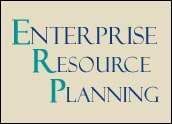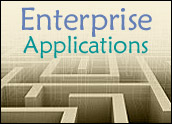
The surround strategy for legacy ERP is real. It’s been going on for several years, and if I was a legacy ERP vendor I would be concerned. The strategy refers to the idea of leaving legacy ERP in place while implementing cloud ERP to handle specialized parts of a business, like a region with currency conversion issues, subscriptions, or something like that.
The advantage is that cloud systems can do some pre-processing and data consolidation that the legacy system then can integrate. But a legacy vendor should not see this as an innocuous customer-led upgrade.
I’d be concerned because when you begin treating other regions as exotic entities, your time is limited. It’s a short hop from being the legacy provider to being out of the picture, because, for the provider, the surround strategy is like eating an elephant — one bite at a time. Or boiling a frog.
Suggested Reading
This type of circumstance has happened before — the legacy providers don’t act quickly enough because the legacy business is so good. For a deep dive into what this means in ERP, take a look at Vinnie Mirchandani’s SAP Nation: A runaway software economy.
Mirchandani is a friend and he takes a long look at a couple of decades worth of data about how SAP sells and services what has become a legacy ERP suite. Of particular interest is the expense that customers paid to stand pat with on-premise ERP, rather than making a graceful transition to the cloud. I believe Mirchandani’s insights tell a lot about the motivations for the surround strategy today. It’s well worth reading.
Modern cloud software platforms make the new approach especially easy and appealing. A platform that supports hundreds or thousands of apps built on it can disintegrate the core reasons that a business went with a single vendor approach many years ago. With a platform and all those ecosystem partners, a business can begin the process of upgrading all of its systems one at a time, rather than in a scorched earth, all at once approach, saving incredible wear and tear on IT and the corporate coffers.
For instance, there’s no great reason why HR happens to be associated with ERP. Over the last few years much business has shifted to independent HR solutions, in part because they are more modern and thus do a better job for today’s needs, but also because the buyers are no longer afraid of an incompatibility driven by integration.
HR is part of ERP today because before outsourcing, payroll was handled by HR and it needed access to the mainframe, which stored the GL. That was then. Today HR also needs better access to front office systems that contain the goals and objectives of the majority of employees — just think of sales compensation, for example.
So extrapolate this and the same logic applies to things like financials and the supply chain, which are their own intimate dances with sales and marketing. Suddenly the case for keeping everything on the mainframe is as out of date as the mainframe itself.
The Future of ERP
If your life is ERP, don’t worry. There’s no danger of seeing ERP go away, just as the end of the mainframe did not mean the end of computing. You could say that ERP’s components are decoupling, but even that isn’t the end of the story — reformation is. As ERP atomizes, businesses will once again need to ask themselves what makes sense? What to keep? What to let go, and where to put it? For instance, would supply chain move closer to CRM, especially in an era when customers own many consumers in the IoT?
They’ll have more choices too, because platform technology from the cloud is making it easier to combine best of breed solutions that make sense — not in some abstract way but for your business.
So to me the future of ERP looks like this:
- Surround legacy ERP with cloud based systems.
- Cloud systems based on a robust platform open up all things related to ERP to reevaluation.
- Empowered businesses rebuild their back office systems to work effectively in the 21st century with business models like subscriptions and a workplace orientation of working anywhere, anytime — saving a bundle in the process. This means ERP data must be available on mobile and other devices, whether by itself or mashed up in a dashboard with front office data.
- These businesses can be more agile because they craft their solutions to their exact needs rather than what some software vendor thought was necessary nearly 20 years ago.
- Nobody looks back.
This is really exciting. No doubt, some enterprising vendors in the cloud will try to find ways to bring it all back together, under one roof. That would make sense since that’s what business does. But the common denominator of the future will be the platform with its thousands of cohabitating partners oriented to delivering end-to-end process support regardless of business demands.
Also, this time the customers will be more vocal in their ability to drive the discussion, and one thing you’ll hear less of is, “our system won’t let us do that.”























































